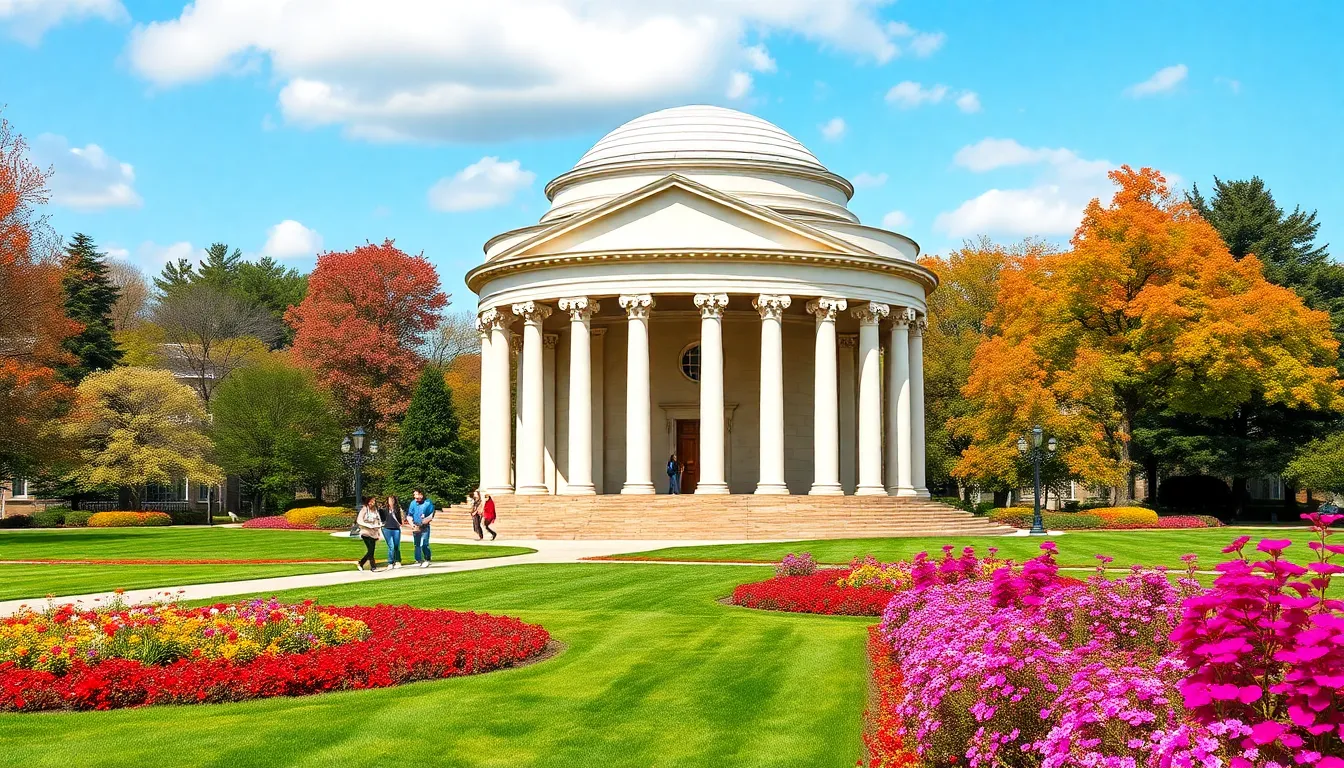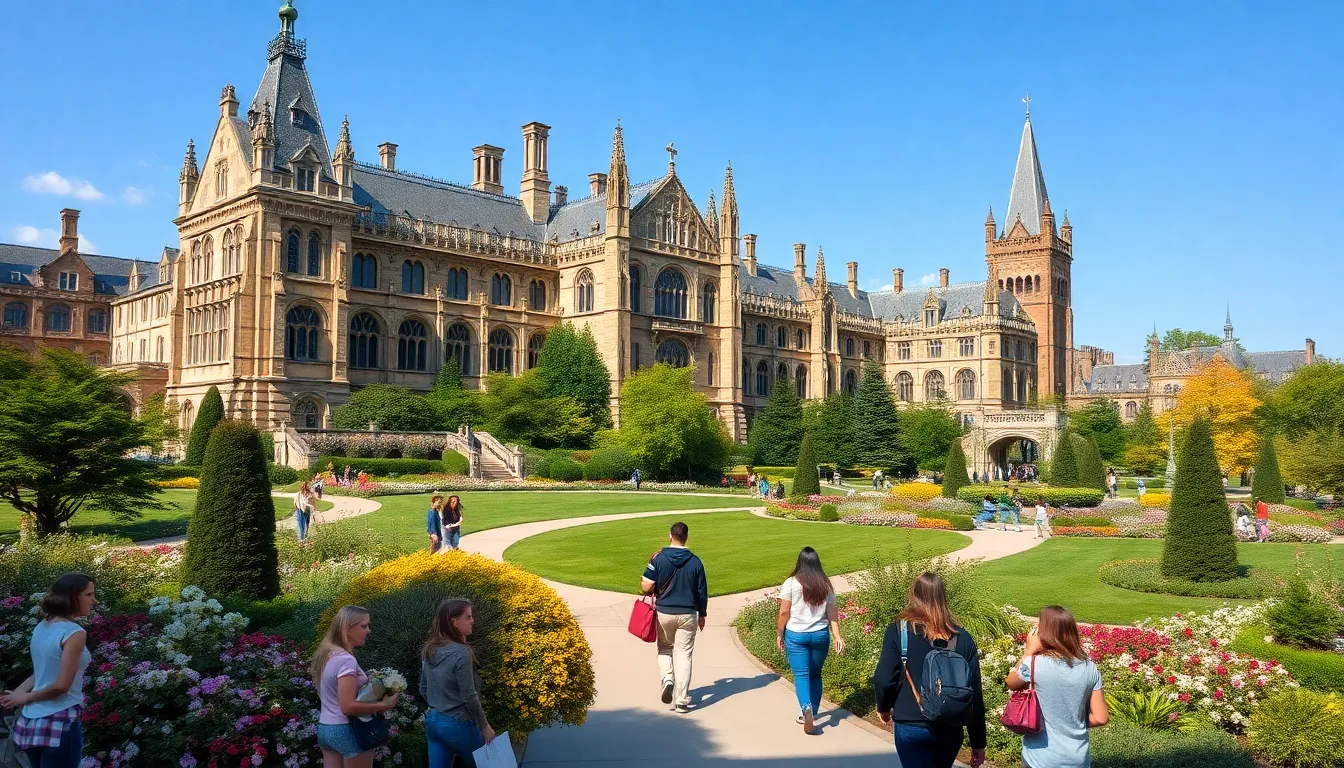Table of Contents
ToggleWhen it comes to higher education, who says looks don’t matter? Picture this: sun-drenched quads, stunning architecture, and vibrant gardens that could make even a cactus blush. The prettiest college campuses in the U.S. aren’t just a feast for the eyes; they’re also the perfect backdrop for those Instagram-worthy study sessions.
From ivy-covered brick buildings to breathtaking lakeside views, these campuses offer more than just a degree. They provide an experience that makes students feel like they’re living in a postcard. So, whether you’re a prospective student or just a campus connoisseur, get ready to explore the most picturesque spots that’ll have you dreaming of late-night strolls under starry skies and picturesque picnics on the lawn.
The Prettiest College Campuses in US
Stanford University in California features stunning architecture and expansive gardens, creating a breathtaking environment. The iconic red-tile roofs and lush landscapes provide a picturesque backdrop for academic pursuits.
University of Virginia in Charlottesville boasts a unique blend of history and beauty. The Rotunda, designed by Thomas Jefferson, adds an elegant touch to the campus, while the surrounding gardens enhance its charm.
Duke University in North Carolina stands out with its Gothic architecture and vibrant greenery. The Sarah P. Duke Gardens offer tranquil spots for students to relax, fostering a serene atmosphere conducive to learning.
University of California, Berkeley showcases a dramatic view of the San Francisco Bay. Its blend of modern and historical buildings, along with vibrant student life, creates a lively yet beautiful setting.
Bryn Mawr College in Pennsylvania impresses with its classic collegiate Gothic architecture and picturesque campus gardens. The campus exudes an inviting atmosphere, perfect for scholarly pursuits and leisurely walks.
Vanderbilt University in Tennessee highlights beautiful garden spaces and a stunning campus quad. The combination of academic buildings and green areas offers a harmonious environment for studying and socializing.
These campuses illustrate how aesthetics contribute significantly to the overall college experience, where beauty meets education in a seamless blend. Exploring these campuses provides a unique opportunity for prospective students and campus enthusiasts alike.
Top Factors Contributing to Campus Beauty

Campus beauty results from several interconnected factors, notably architectural styles and natural landscapes. These elements play a crucial role in shaping the overall aesthetic experience for students and visitors alike.
Architectural Styles
Distinct architectural styles play an essential role in a campus’s visual appeal. Historic buildings, such as the Rotunda at the University of Virginia, showcase classic design while embodying the institution’s rich heritage. Modern structures often incorporate innovative designs that blend seamlessly with traditional elements, creating a harmonious balance. Gothic architecture at Duke University offers a dramatic flair, capturing the attention of all who visit. Varied styles contribute to unique atmospheres, reflecting the character of each institution. Each design choice adds depth to the educational experience, inspiring creativity and admiration among students.
Natural Landscapes
Natural landscapes significantly enhance campus beauty, providing serene backdrops for academic life. Lush gardens and expansive green spaces, as seen at Vanderbilt University, invite students to relax and study outdoors. Scenic views at the University of California, Berkeley showcase remarkable geographical features, integrating nature with the academic setting. Seasonal changes add charm, transforming landscapes with vibrant colors and textures throughout the year. Paths lined with trees encourage leisurely strolls, fostering connections among students. Overall, these natural elements create inviting environments that enrich the collegiate experience.
Notable Examples of Pretty Campuses
Many college campuses showcase stunning aesthetics, appealing to students and visitors alike. Ivy League institutions stand out for their historical significance and architectural elegance.
Ivy League Institutions
Harvard University features iconic red brick buildings set against lush green lawns. Yale University boasts a captivating gothic architecture that captures the essence of academic tradition. Princeton University’s serene grounds blend nature with stunning structures, creating peaceful study environments. Brown University is known for its picturesque greenery and signature campus quads that invite exploration. The sense of history and prestige across these campuses contributes to their notable beauty.
Public Universities
University of California, Los Angeles (UCLA) presents vibrant landscapes and stunning views of the Santa Monica Mountains. University of Florida’s campus is famous for its sprawling gardens and majestic live oaks, offering tranquility amid academia. University of North Carolina at Chapel Hill is notable for its classic brick buildings and scenic arboretum, promoting a serene atmosphere. University of Washington captivates visitors with its cherry blossoms in spring, enhancing the campus’s allure. These public universities demonstrate how natural beauty naturally enhances the collegiate experience.
The Role of Campus Culture in Aesthetics
Campus culture significantly shapes the perception of beauty within higher education. Community engagement, events, and traditions contribute to the vibrancy of a campus environment. Students often enjoy participating in outdoor activities, fostering a sense of belonging that enhances their college experience.
Traditions such as seasonal festivals and art exhibitions draw attention to the beauty of campus grounds and architecture. Social gatherings in scenic locations create an inviting atmosphere, encouraging interactions among students. Spaces designed for collaboration, like gardens or open areas, promote academic discussions while surrounded by nature.
Aesthetic value derives not only from physical attributes but also from the dynamic culture cultivated within the community. Unique elements, such as murals or sculptures, reflect the identity and values of a college, promoting pride among students. Local flora and fauna often become integral parts of campus life, enhancing the overall ambiance and offering students an opportunity to connect with nature.
Additionally, architecture plays a vital role in influencing campus culture. Stunning buildings serve as backdrops for everyday activities, prompting students to appreciate their surroundings. The blend of modern and traditional designs not only adds aesthetic appeal but also creates a sense of continuity across generations.
Students who actively engage with their campus often find that beauty enhances their educational experience. An appreciation for aesthetics fosters creativity and inspiration, laying the foundation for lasting memories. This connection between campus culture and aesthetics ultimately enriches the collegiate experience, making institutions more inviting and inspiring places to learn.
The beauty of college campuses across the U.S. creates an enriching backdrop for academic pursuits and personal growth. These stunning environments not only inspire creativity but also foster a sense of community among students. As prospective students explore their options, the visual appeal of a campus can significantly influence their decision-making process.
Aesthetically pleasing campuses invite students to engage with their surroundings and create lasting memories. From historic architecture to lush landscapes, these institutions offer more than just education; they provide a holistic experience that combines learning with beauty. Embracing the charm of these campuses can lead to a fulfilling college journey.







